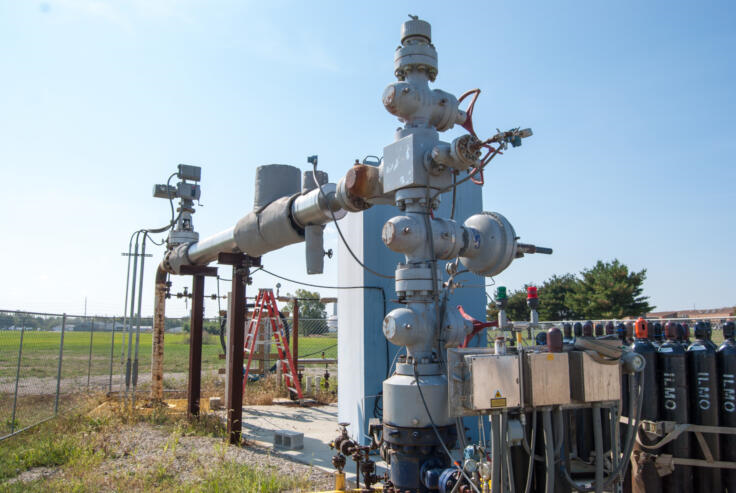Innovating by Trapping and Storing Carbon Underground
Advanced carbon capture and storage (CCS) technologies offer significant potential for reducing carbon dioxide emissions, while minimizing the economic impacts of the solution. Under the Industrial Carbon Capture and Storage (ICCS) Program, the U.S. Department of Energy (DOE) has collaborated with industry partners in cost-sharing arrangements to demonstrate technologies that will capture carbon dioxide emissions from industrial sources and either store or beneficially re-use them.

Working with a project team including representatives from industry, government and academia, ADM was selected to conduct one of three projects in the DOE ICCS program to test large-scale industrial CCS technologies. The objective of ADM's project is to develop and demonstrate an integrated system of collecting
and compressing carbon dioxide derived from an ethanol plant and injecting it into the Mt. Simon Sandstone formation - a prolific saline reservoir in the Illinois Basin with the capacity to store billions of tons of carbon dioxide - for permanent geologic storage. Under the guidance of the Illinois ICCS, the effort represents the largest saline storage demonstration project in the United States.
The project offers significant potential for reducing carbon dioxide emissions to the atmosphere by storing approximately one million tons of carbon dioxide a year and leveraging the U.S. geologic saline storage capacity, which is estimated to range from 1,700 to 20,000 billion metric tons. In addition, the project has a variety of economic benefits, including a potential market for the technology among the approximately 200 fuel-grade ethanol plants in the U.S. that may be interested in access to geologic storage. The project demonstrates that the technologies included in the ICCS program have progressed beyond the research and development stage to a scale that can be deployed into commercial practice within the industry.
The commercial-scale sequestration well began operation in April of 2017. During the course of the year, we successfully injected and sequestered just over 507,000 metric tons of carbon dioxide. This is equivalent to the emissions from 108,500 passenger vehicles in a year.
The project also includes a 15,000-square-foot educational facility located at Richland Community College, just north of the injection well. The National Sequestration Education Center (NSEC) is a national focal point for carbon capture, utilization, and storage (CCUS) community outreach and academic programming. The NSEC features traditional artifact displays; a leading-edge, state-of-the-art Sequestration Technology Education Learning Array (STELA), which is an interactive presentation to learn about CCUS technologies; and a sustainability nature walk. The facility engages with the community to provide CCUS education and outreach to primary school classes, higher education classes, scientists and community members.